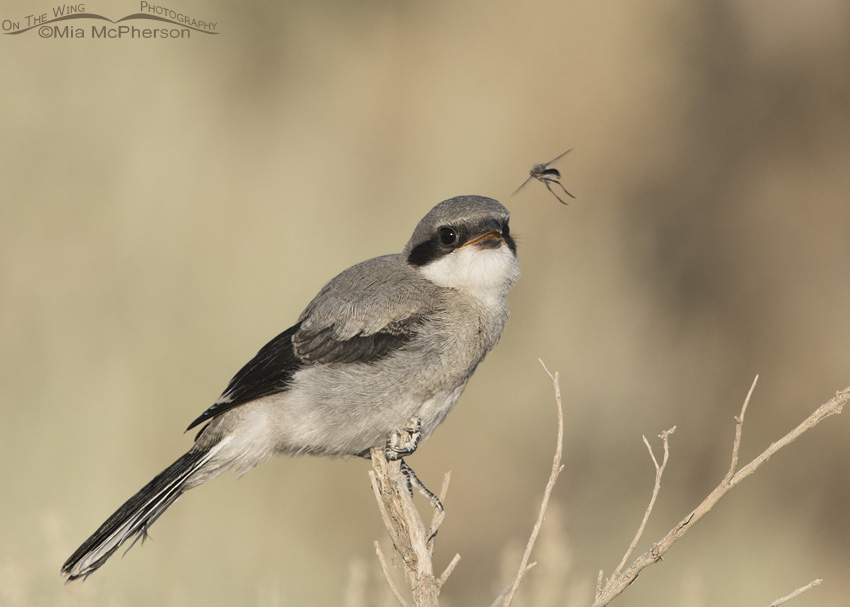 Loggerhead Shrike juvenile looking at a Robber Fly – Nikon D810, f8, 1/1000, ISO 400, Nikkor 500mm VR with 1.4x TC, natural light
Loggerhead Shrike juvenile looking at a Robber Fly – Nikon D810, f8, 1/1000, ISO 400, Nikkor 500mm VR with 1.4x TC, natural light
I photographed out on the West Desert yesterday in the canyons of the Stansbury Mountains of Tooele County. Bird photography was a little slow but that is to be expected this time of the year.
I did get to photograph juvenile and adult Loggerhead Shrikes in the foothills though and photographing these little song bird wannabe raptors is always fun. They are still begging for food from the adults at this age but they are also going out and catching prey on their own.
When I took this image the juvenile Loggerhead Shrike was perched on a dead twig when the robber fly flew into the frame, the shrike took off after the fly and caught it in mid air. The juvenile shrike then flew to a sagebrush and ate it while hidden behind the foliage. I wish I had been able to photograph it eating the robber fly! I have several other frames where I can see robber flies near the shrikes so they must have been the prey of the day or at least for this juvenile.
Robber flies are beneficial flies. The robber flies capture insect pests then paralyze them by injecting their prey with neurotoxic saliva through their proboscis that also contains proteolytic enzymes which then turns them into a bug milkshake that the robber flies slurp up through their proboscis. They consume a lot of pests but also some beneficial insects too. They are only rarely known to bite humans. Good thing, right?
Life is good.
Mia.
Click here to view more of my Loggerhead Shrike photos plus facts and information about this species.


Definitely a good thing the robber flies don’t bite us. Bug milkshake wouldn’t look good on any CV.
Love the loggerhead.
Wonderful capture Mia!!
Wonderful capture!
Loved this shot and comments AND “Related”….a very interesting bird and the young ones arevso full of sass and personality.
Great shot Mia. Very interesting catch.
Picture perfect! Love this!
Ok, that’s pretty fantastic!
Great picture! What a lovely bird!
Cool!
I love these kind of shots… Now if only that Shrike had opened his beak
just as the Robber Fly flew buy, and if the Shrike had grabbed him… Oh
well, maybe “next time.” Ha… Still, a very nice shot, and one that made
me smile. ;-)))